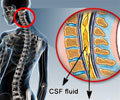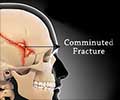Information about Tramadol
Generic Name : TramadolUp-to-date prescription details regarding Tramadol are provided here.
Pronunciation : tra' ma dole
Learn the correct pronunciation of the Tramadol, understand it's uses, recommended dosages, its indications, how to take, when to take, when not to take, side effects, special precautions, warnings and its and its storage instructions.You will also find a list of the medication's International and Indian brand or trade names, as well as its pricing information. For verification of the information presented on this page or for additional clarifications, it's advisable to consult your doctor.
ICD Code : Y45.3 Therapeutic Classification : Analgesics
Trade Names/Brand Names of Tramadol
India :
Postadol (50mg/ml) |
Adamon (100mg) |
Bestodol |
Postadol (50mg/ml) |
Tramazac (50mg) |
Hyperdol |
Taxidol |
Urogendol-XL (100mg) |
Relidol (50mg) |
Mobiya -ST
International :
Rybix ODT, Ryzolt, Ultram, Ultram ER.
Why is Tramadol Prescribed? (Indications)
This medication is an opioid analgesic, prescribed for moderate to severe pain in adults. It works by changing the way the body senses pain.When should Tramadol not be taken? (Contraindications)
Contraindicated in patients with suicidal thoughts, acute alcoholism, head injuries, raised intracranial pressure, severe kidney impairment, hypersensitivity and during breastfeeding.What is the dosage of Tramadol?
PO- The recommended dose is 50-100 mg (immediate release tablets) every 4-6 hours as needed for pain. The maximum dose is 400 mg/day.IV/IM- Moderate to severe pain- The recommended dose is 50-100 mg 4-6 hourly.
How should Tramadol be taken?
It comes as a tablet, capsule to take by mouth with or without food. It also comes as a solution for injection to be administered by a healthcare provider into the vein or large muscle.What are the warnings and precautions for Tramadol?
• Caution should be exercised in patients with history of epilepsy, brain or spine infection, head injury, brain tumor, stroke, obstructive bowel disease, muscle weakness, respiratory depression, prostate enlargement, liver or kidney disease, elderly, children and during pregnancy.• It may cause dizziness or drowsiness, do not drive a car or operate machinery while taking this medication.
• Patients may develop with an increased risk of epilepsy while taking this medication; if it so consult with your doctor.
What are the side effects of Tramadol?
Most Common- Dizziness/vertigo, nausea, constipation, headache, drowsiness, vomiting, itching, CNS stimulation, weakness, sweating, indigestion, dry mouth and diarrhea.Body as a Whole- Uneasiness.
Heart- Dilatation of blood vessels.
Central Nervous System- Anxiety, confusion, coordination disturbance, elevated mood, nervousness and sleep disorder.
Gastrointestinal- Abdominal pain, loss of appetite and flatulence.
Musculoskeletal- Increased muscle tone.
Skin- Rash.
Eye- Visual disturbances.
Genitourinary- Menopausal symptoms, urinary frequency and urinary retention.
What are the other precautions for Tramadol?
Avoid alcohol consumption.Avoid excess dosage.












